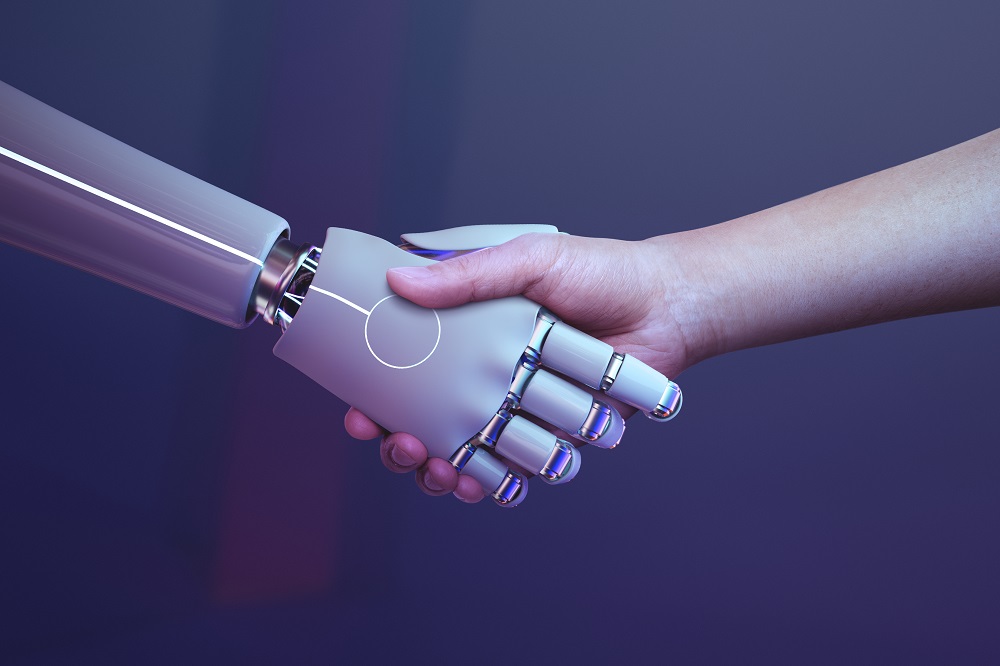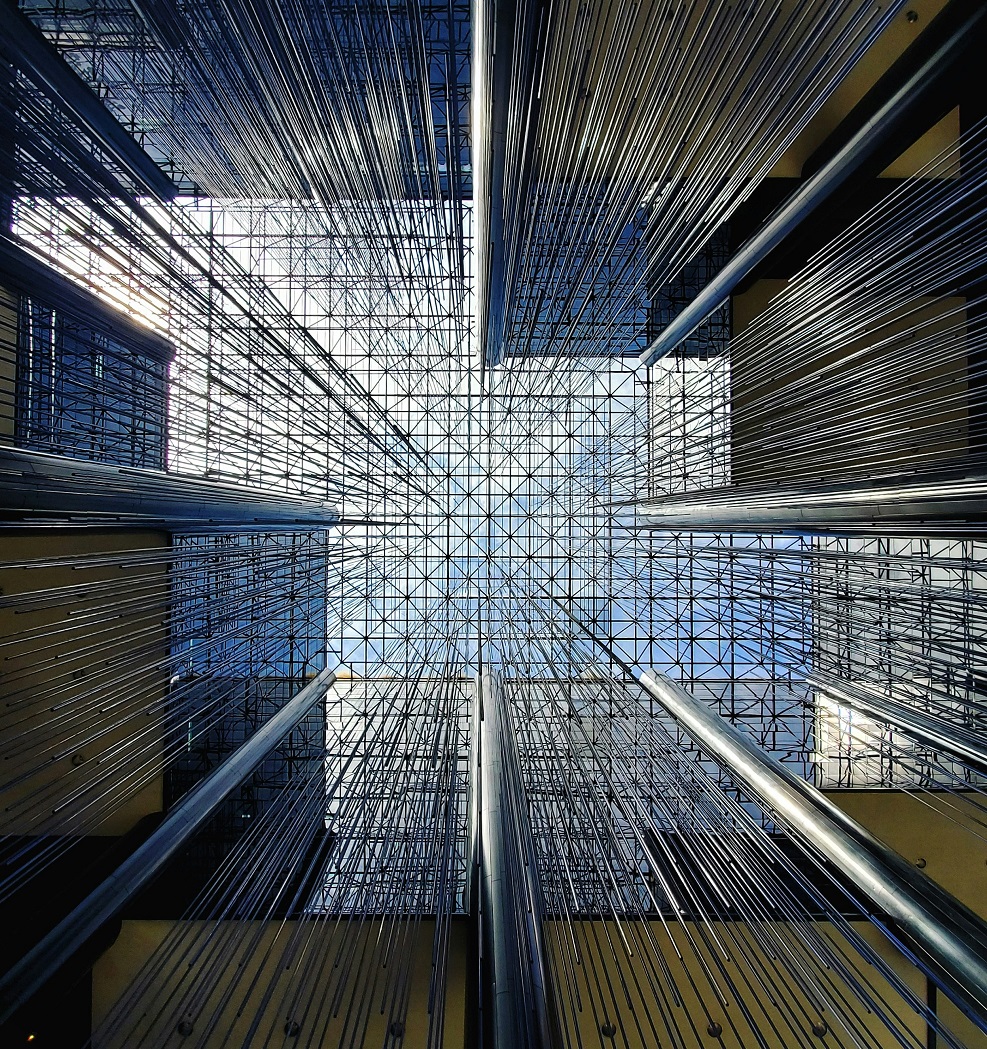The rise of robots/ automation is gaining speed in the post-pandemic world. While a lot of data has been documented about the impact of automation over the years, the reality is complex. Automation is definitely affecting specific professions and tasks and impacting people. This is also giving rise to workforce disruptions. With the overall volume of work growing, it is also creating more opportunities.
Are workforces preparing for these changes? And how?
Automation is growing and impacting the way society, the economy, and the world function. The progress of automation will generate demand for new skills from people. Instead of adopting tech to replace the workforce, employers should utilize digital tools to make jobs more satisfying and efficient.
In the coming years, automation is likely to boost economic growth and productivity, but it is also likely to increase inequality around the globe and change it drastically.
Technological solutions that lessen labor pressure by automating specific processes have become essential in driving efficiency and business growth. The demand for AI is expected to rise to a value of $190.61 billion by 2025 at the global level.
Artificial intelligence has made serious inroads into several aspects of the workplace. The adoption of automation robotics is not aimed at replacing human beings but embracing digital tools to increase efficiency at jobs in every sector.
Yes, the use of automation is advancing, but it's no substitute for human assistance. Automation is adding to the net effect of making life better for business.
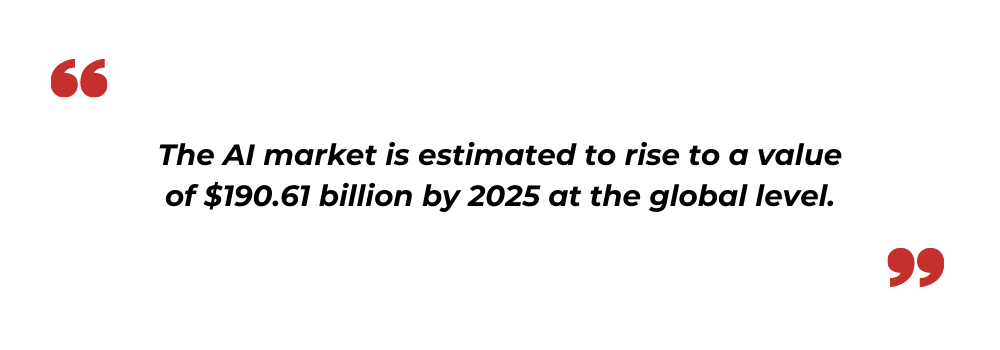
Rise of Automation: The Future has Tons of Robots
Robots are not just restricted in the workplace. They are expanding their skills and advancing up the corporate ladder, showcasing excellent productivity and pushing aside their human counterparts. Intelligent machines are beginning their march in the labor force and becoming more sophisticated than their existing counterparts like Siri.
Mechanizing mundane tasks has been underway for years. Automation has made remarkable progress in the past decade and is spreading into several domains. Companies are willing to automate their operations and have one goal in mind: to eliminate job redundancy and enhance productivity. Automation is creating huge opportunities leading to a positive change in the economy.
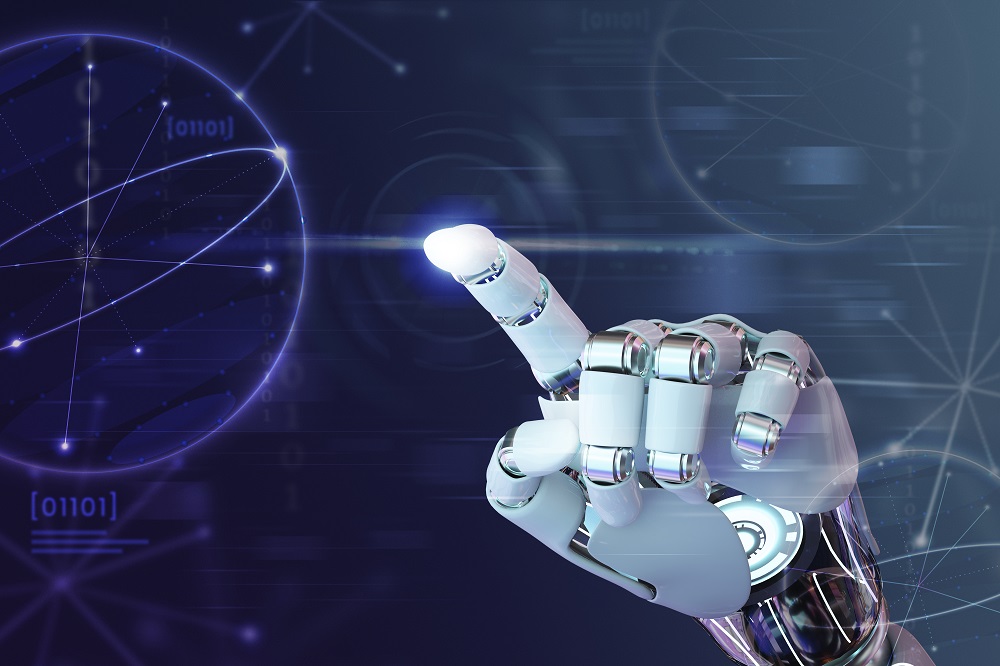
What's this buzz around Automation all about?
The robotics industry is growing at an extremely fast pace. AI powdered machines or robots are being employed in a likely responsive work environment. From processing to assembling, painting, inspecting, and delivering, robots are interacting and collaborating with humans to optimize productivity. With technological advancements, robots are getting more in shape and developing with every enhancement.
Automation is helping organizations to enhance the ability to learn from a huge amount of data at an incredible speed, making robots more capable.
Robots Are Coming – The Impacts of Automation
A clear negative correlation is being drawn between the rise of robot species and the decline of jobs performed by humans.
But how is this impacting employment distribution?
Artificial, fully functional machines, robots are starting to change. With the rapid innovations, machine learning has empowered scientists to make robots that are better informed about their surroundings and can make wiser decisions. Robots are now leaving the carefully managed industrial settings and advancing in supermarkets, clinics, and much more.
The impending 'Rise of the Robots' could decimate jobs.
Neither automation is a new phenomenon, nor is jumping to conclusions without full consideration of the automation facts.
The only factor that is new in this progression is the pace of change that is predicting the beginning of the new industrial revolution that will change the face of work.
While the modern economy functions on automation, it is natural that the future will be driven by automation as well.
Studies highlighting the job-destroying potential of future robotic technology and artificial intelligence is causing us to underestimate the impact of automation.
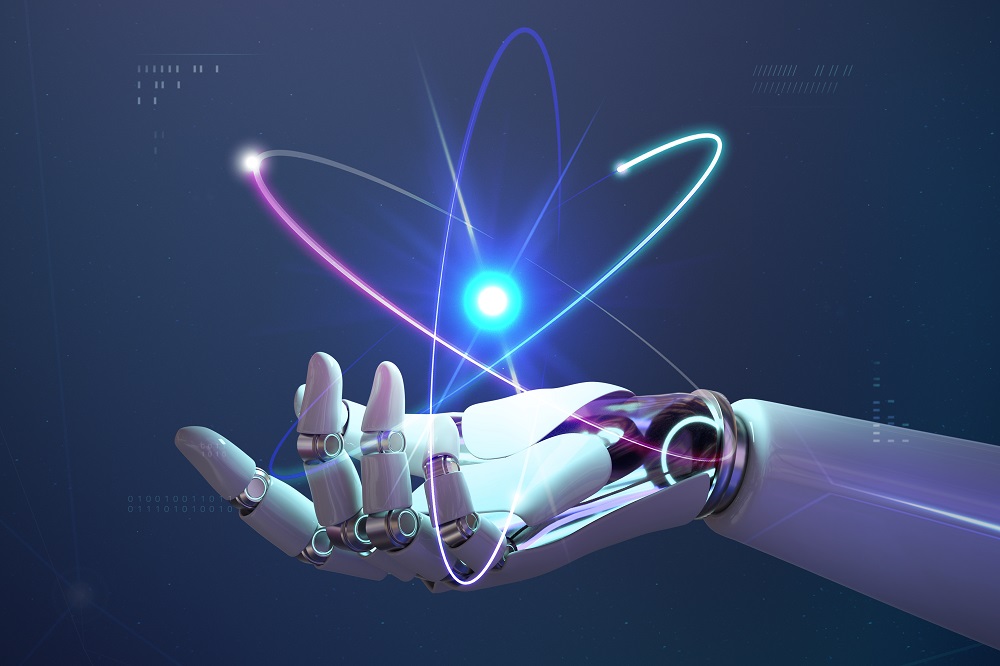
Read more: Top AI Stocks to Watch Out for in 2022
The Evolving Role of People at Work
The advancing automation robotics brings to light the evolving role of people in the workplace. Employees can now delegate specific tasks to a fleet of robots instead of relying on their strength or ability to carry out redundant tasks. Robots still need to be supervised. This will enable human operators to ensure that the requirements are favorable for the robot to function optimally.
Human workers will direct the work of machines, analyzing data and dealing with elements that fall outside a robot's ideal operating conditions. A single individual will be able to supervise multiple machines at once. The implications of this shift are likely to go even further.
While some jobs may require human intervention and assistance next to robots, in other cases, the work could be entirely accomplished by robots without any interaction. This will enable employees to manage the operations from a short distance or even from a different continent. This will likely open up a broader set of employment and technological opportunities.
How would automation help create new jobs in the new normal?
Some experts believe that artificial intelligence and automation will either destroy jobs or create new ones. But in reality, the advancing inclination toward automation will likely both kill and create jobs. Human workers will become redundant in particular spheres, whereas many new roles will also crop up.
Automation has gained attention amid the social distancing norms implemented due to the COVID-19 pandemic. While adhering to social distancing protocols, future robotic technology enables enterprises to adhere to social distancing protocols, enabling them to undertake more challenging work, including interacting with customers, developing better outcomes, and managing other operations.
The robotics revolution is rapidly accelerating a fast-paced advancement in diverse sectors across the globe. Industries are adopting robots to diverse degrees to transform their operational capabilities. But the ground reality states that even if automation disrupts specific industries, employment, in total, will continue to rise.
With social-distancing directives here to stay, organizations are likely to continue employing automation robotics. More industries are accelerating their use of automation to benefit the restructuring of workplaces in ways that minimize close human contact. The future of work is not about machines replacing humans but of machines complementing humans in the workplace.
Read more: Building a Robust ESG Reporting Framework With Intelligent Automation
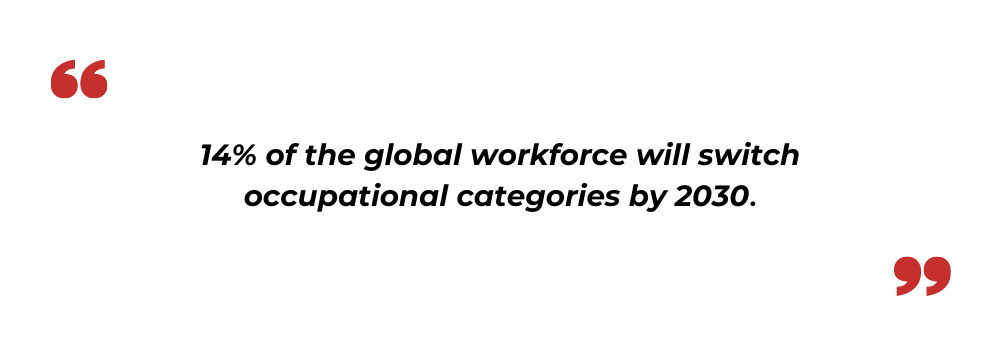
Automation And Robots Are Bringing Along Many Benefits Too
Robots and automation are synonyms for change. Predictions state that by 2030, 75 million to 375 million workers (3 to 14 percent of the workforce across the globe) will be required to change their occupational categories.
With the labor market reshaping, the employment of automation and robots is destroying old jobs as well as creating new ones. While these changes are bringing both winners and losers, millions of workers are experiencing their old jobs being performed by new technologies. This has given rise to a dire need for workforces to learn new skills to create an inclusive environment for humans and robots.
The pandemic saw a dip in the labor market owing to the uncertainty around the spread of Coronavirus. This resulted in robots taking jobs instead, leading to the rise of robots. Labor shortages and rising wages are also contributing towards investment in automation.
What does the future of jobs hold?
The only response to this-
We can only hope and imagine that taking into consideration today's industrial revolution, the future will unfold smart jobs with less human intervention.
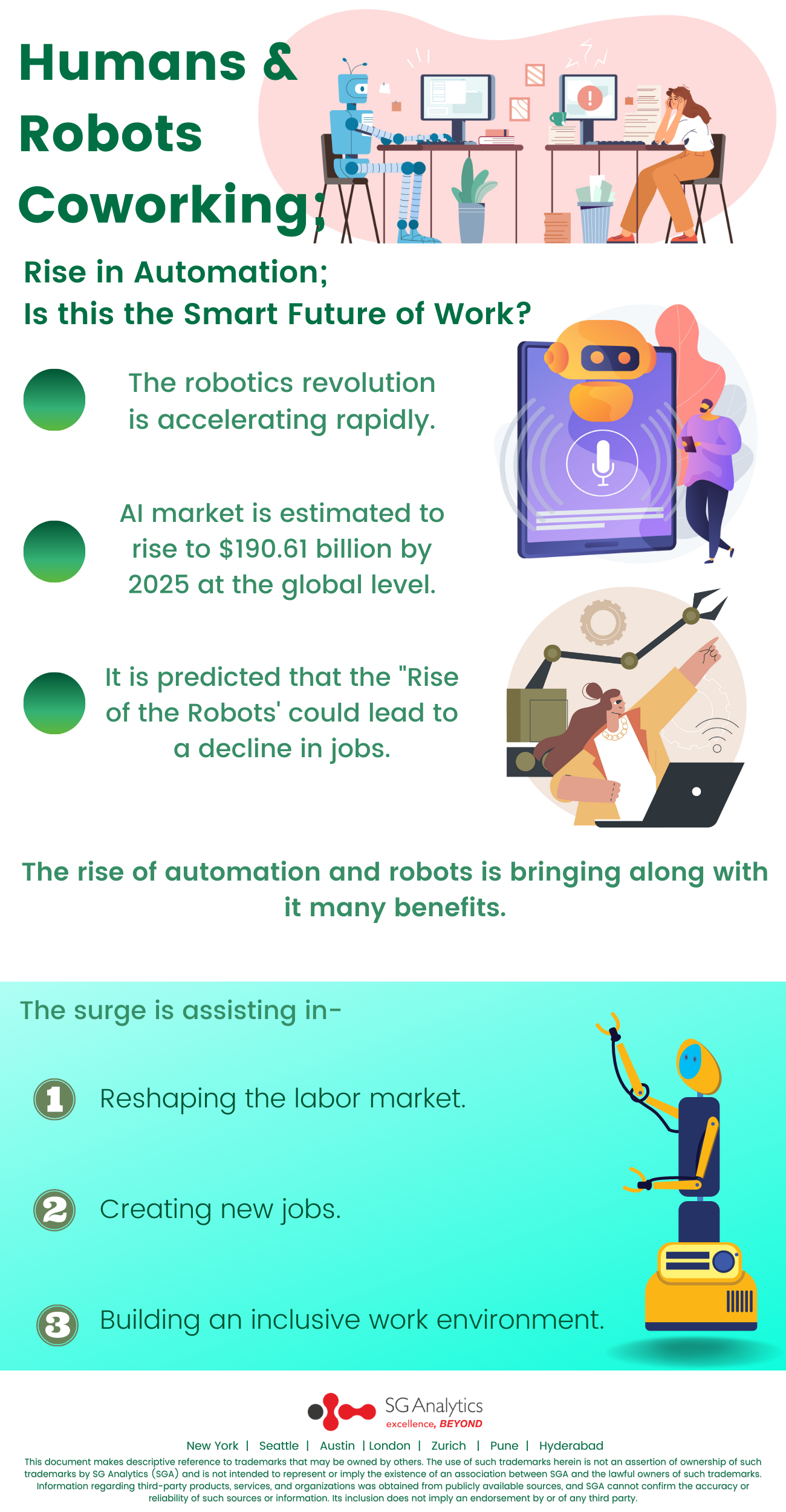
A New Role: The Robot Boss
Tools have come a long way. What started with sticks and stones has now transformed into enabling humanity to achieve incredible triumphs, from feeding billions to space exploration.
Smart tools like autonomous robots are pushing the limits even further. Now is the need to address the next set of challenges for the human workforce. While some predict that the rise of robots will humans in the workplace, others are of the opinion that instead of replacing humans, modern robots will achieve amazing feats working alongside them.
Decision-makers need to balance all the aspects involved in this automation equation. Organizations need to establish new ecosystems to train employees and robots in unison to uncover the potential gains of long-term robotization growth and its benefits. With automation, nothing is likely to remain untouched. From policy-makers to tech companies, entrepreneurs, and professionals in the education field, automation is likely to play a very important role.
With offices in New York, San Francisco, Austin, Seattle, London, Zurich, Pune, and Hyderabad, SG Analytics a pioneer in Research and Analytics, offers tailor-made services to enterprises worldwide. A leader in RPA services, SG Analytics focuses on leveraging analytics and automation technology and helps organizations embrace workforce transformation. Contact us today if you are looking to make critical data-driven decisions that stimulate accelerated growth and breakthrough performance.


